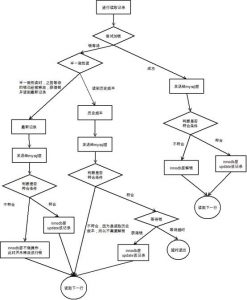------------------------
LATEST DETECTED DEADLOCK
------------------------
2016-03-30 15:19:46 7f79e7fec700
*** (1) TRANSACTION:
TRANSACTION 132876, ACTIVE 9 sec fetching rows
mysql tables in use 1, locked 1
LOCK WAIT 252 lock struct(s), heap size 96696, 226 row lock(s), undo log entries 1
MySQL thread id 5, OS thread handle 0x7f79e8bb5700, query id 15 redhat64-26 10.47.160.26 root updating
update test.c set c = '94414' where (a,b) in ((1,'5167'))
*** (1) WAITING FOR THIS LOCK TO BE GRANTED:
RECORD LOCKS space id 6 page no 6 n bits 496 index `PRIMARY` of table `test`.`c` trx id 132876 lock_mode X locks rec but not gap waiting
Record lock, heap no 211 PHYSICAL RECORD: n_fields 6; compact format; info bits 0
0: len 4; hex 80000001; asc ;;
1: len 4; hex 80000358; asc X;;
2: len 6; hex 00000000c7fb; asc ;;
3: len 7; hex 06000001671e10; asc g ;;
4: len 5; hex 3533343732; asc 53472;;
5: len 3; hex 383536; asc 856;;
*** (2) TRANSACTION:
TRANSACTION 132878, ACTIVE 9 sec fetching rows
mysql tables in use 1, locked 1
98 lock struct(s), heap size 96696, 72 row lock(s), undo log entries 1
MySQL thread id 6, OS thread handle 0x7f79e7fec700, query id 17 redhat64-26 10.47.160.26 root updating
update test.c set c = '33764' where (a,b) in ((1,'5250'))
*** (2) HOLDS THE LOCK(S):
RECORD LOCKS space id 6 page no 6 n bits 496 index `PRIMARY` of table `test`.`c` trx id 132878 lock_mode X locks rec but not gap
Record lock, heap no 211 PHYSICAL RECORD: n_fields 6; compact format; info bits 0
0: len 4; hex 80000001; asc ;;
1: len 4; hex 80000358; asc X;;
2: len 6; hex 00000000c7fb; asc ;;
3: len 7; hex 06000001671e10; asc g ;;
4: len 5; hex 3533343732; asc 53472;;
5: len 3; hex 383536; asc 856;;
*** (2) WAITING FOR THIS LOCK TO BE GRANTED:
RECORD LOCKS space id 6 page no 6 n bits 496 index `PRIMARY` of table `test`.`c` trx id 132878 lock_mode X locks rec but not gap waiting
Record lock, heap no 166 PHYSICAL RECORD: n_fields 6; compact format; info bits 0
0: len 4; hex 80000001; asc ;;
1: len 4; hex 8000032b; asc +;;
2: len 6; hex 00000000c5e1; asc ;;
3: len 7; hex 790000019f170a; asc y ;;
4: len 5; hex 3734313133; asc 74113;;
5: len 3; hex 383131; asc 811;;
*** WE ROLL BACK TRANSACTION (2)



